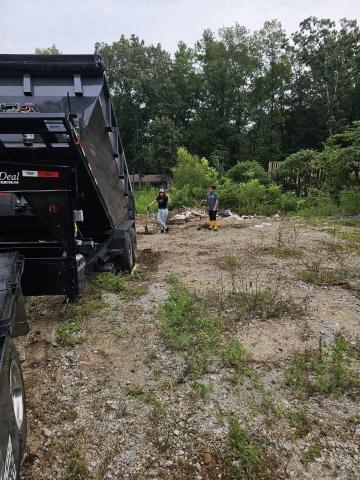Embarking on a remodeling project is an exciting venture that can breathe new life into your home or workspace. However, amidst the thrill of selecting designs and materials, it's essential not to overlook the crucial aspect of waste management. Efficiently utilizing the dumpster space can not only help keep your project organized but also contribute to reducing environmental impact. In this article, we will explore some practical tips on how to make the best use of dumpster space during your remodeling project.
Plan Ahead:
The key to optimizing dumpster space starts with careful planning. Before the remodeling project begins, assess the scope of work and estimate the volume of waste that will be generated. This proactive approach enables you to choose the right-sized dumpster for your needs, preventing unnecessary expenses for a larger container that may not be fully utilized.
Sort and Segregate:
Once the project is underway, implement a systematic waste sorting strategy. Categorize materials into distinct groups such as wood, metal, concrete, and general waste. By separating materials at the source, you facilitate efficient disposal and recycling. This not only saves space but also ensures that recyclable materials are appropriately handled, reducing the environmental impact of your project.
Break Down Large Items:
Large and bulky items can quickly fill up dumpster space. Break down furniture, cabinets, and other significant components into smaller, manageable pieces. This not only maximizes the available space but also aids in preventing overloading, making waste removal safer and more straightforward.
Compact and Flatten:
Optimize the space within the dumpster by compacting materials when possible. Flatten cardboard boxes and break apart materials like drywall to minimize voids. By flattening and compacting waste, you create a more organized and efficient use of space, allowing you to dispose of more materials within the same dumpster size.
Consider Donating or Reusing:
Before discarding items, evaluate whether some materials could be donated or repurposed. Items in good condition, such as appliances, fixtures, or cabinets, may find a second life in another project or through charitable organizations. By diverting reusable items from the dumpster, you not only save space but contribute to sustainability efforts.
Coordinate Pick-ups:
Monitor the fill level of your dumpster regularly, and schedule timely pick-ups with your waste management provider. Avoiding delays in waste removal ensures that your project stays on track, and you can continue to utilize the dumpster space efficiently throughout the remodeling process.
Educate Your Team:
Communication is vital in ensuring that everyone involved in the remodeling project understands the importance of efficient waste management. Educate your team on the sorting and compacting processes to maintain a collaborative effort in maximizing dumpster space.
In conclusion, effective waste management is a critical component of any remodeling project. By implementing strategic planning, sorting, compacting, and reusing practices, you can make the best use of dumpster space while minimizing your environmental impact. A well-managed waste disposal process not only keeps your project organized but also contributes to a sustainable and eco-friendly approach to remodeling.
